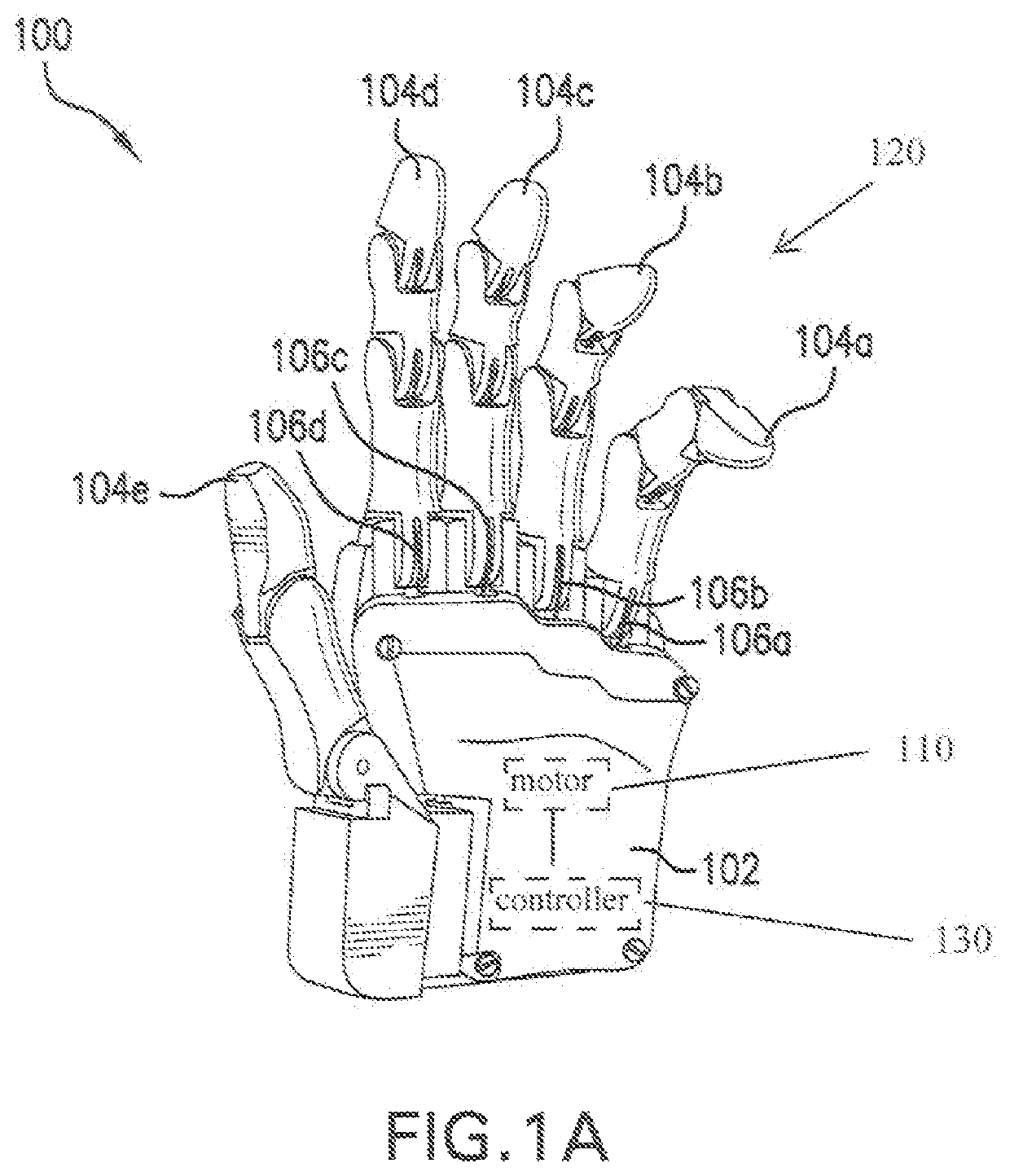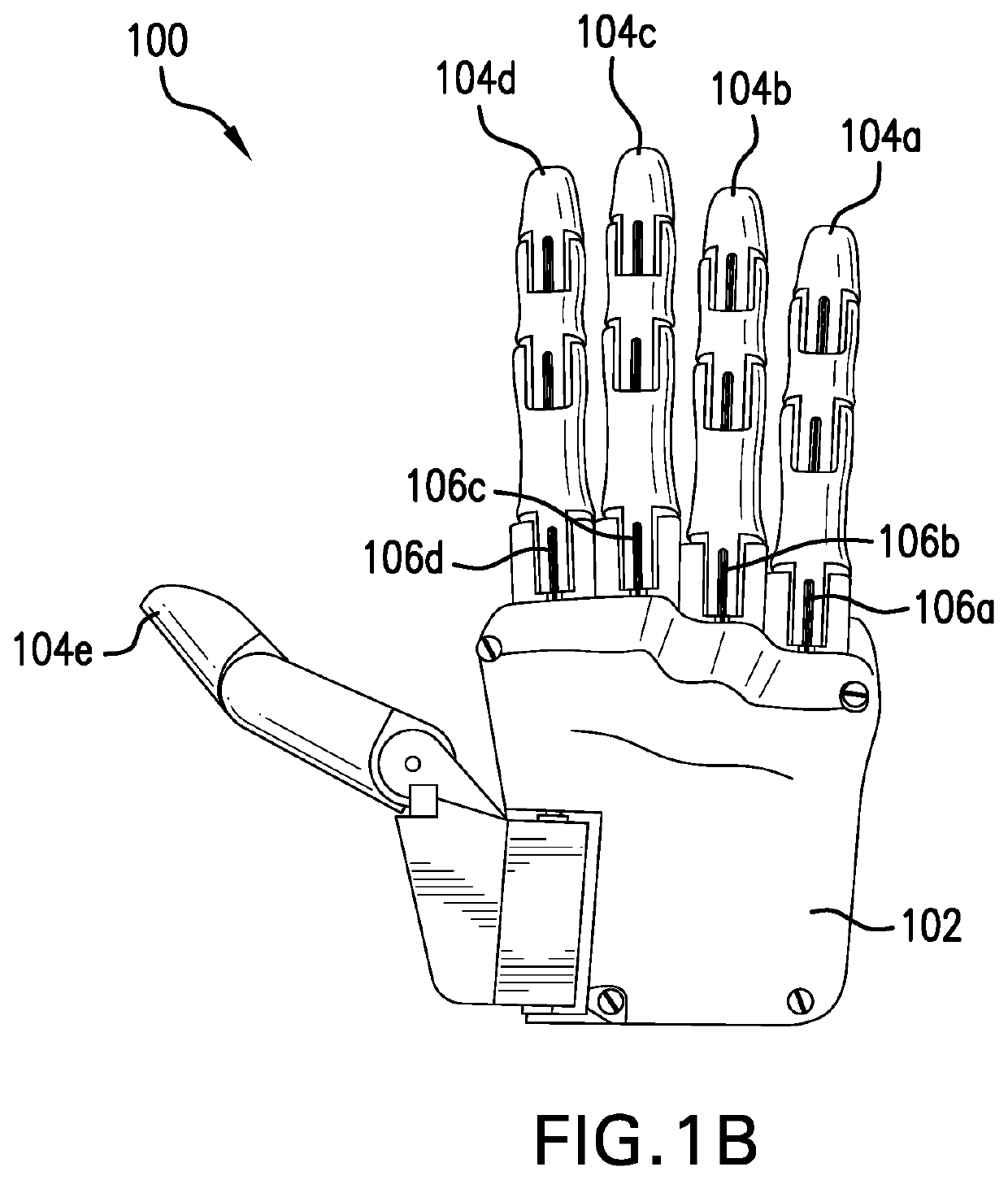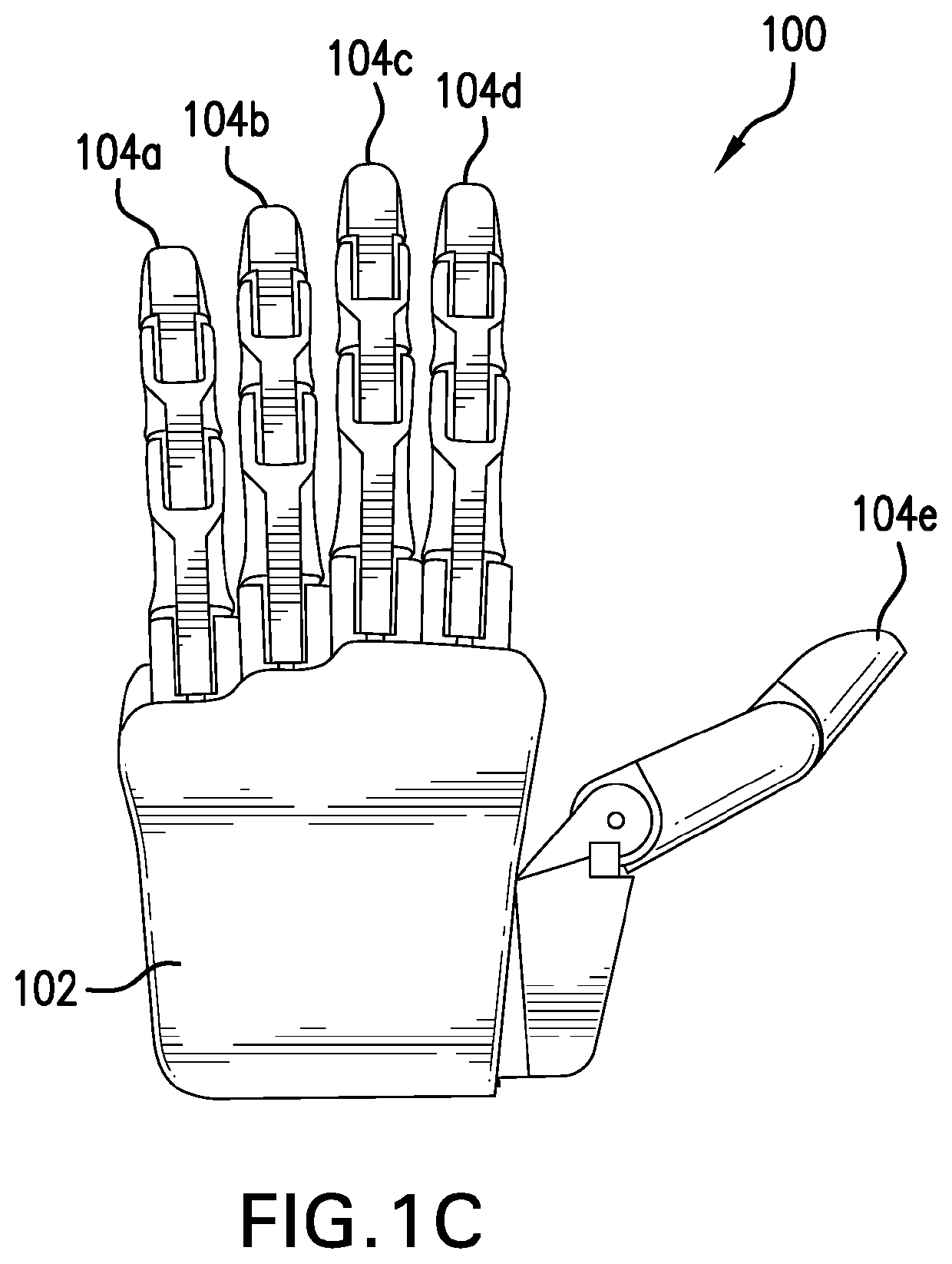Systems and methods for fine motor control of fingers on a prosthetic hand to emulate a natural stroke
a prosthetic hand and hand technology, applied in the field of system and method for fine motor control of fingers on a prosthetic hand, can solve the problems of inability to generate a stroking motion of the fingers, lack of the same utility, and immobility of the prosthetic device,
- Summary
- Abstract
- Description
- Claims
- Application Information
AI Technical Summary
Benefits of technology
Problems solved by technology
Method used
Image
Examples
Embodiment Construction
[0037]A prosthetic hand of the invention generally includes a housing, one or more fingers, and one or more motors connected to the fingers via cables. In an embodiment, in place of cables, other means may be used to effect flexion of the finger. In an example, gears may be connected to a motor to effect flexion or extension on a finger. The motors may be controlled by a controller located within or exterior to the prosthetic housing, such as a processor (e.g., an Arduino or other suitable microprocessor) to effect motion of the fingers. The prosthetic hand may further include stick-on electrodes in communication with the controller. In another embodiment, other suitable data input methods as are known in the art may be used to control the prosthetic hand. The electrodes may be placed on the surface of the skin to detect electrical signals from the voluntary contraction of muscles. In one embodiment, the electrodes are placed on the surface of the skin of the forearm to detect elect...
PUM
 Login to View More
Login to View More Abstract
Description
Claims
Application Information
 Login to View More
Login to View More - R&D
- Intellectual Property
- Life Sciences
- Materials
- Tech Scout
- Unparalleled Data Quality
- Higher Quality Content
- 60% Fewer Hallucinations
Browse by: Latest US Patents, China's latest patents, Technical Efficacy Thesaurus, Application Domain, Technology Topic, Popular Technical Reports.
© 2025 PatSnap. All rights reserved.Legal|Privacy policy|Modern Slavery Act Transparency Statement|Sitemap|About US| Contact US: help@patsnap.com



